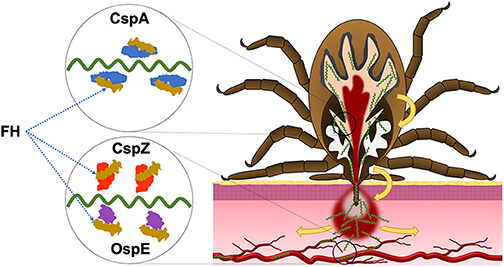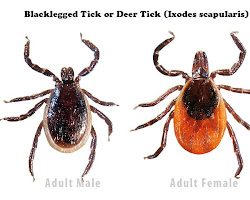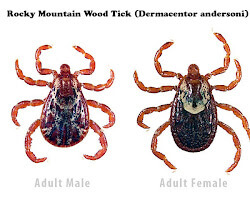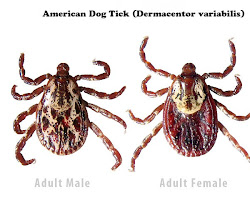As the sun-drenched days of summer beckon us into the great outdoors, an often underestimated threat looms in the grass and wooded areas—tick bites. In this comprehensive guide, we delve deep into the world of tick-borne illnesses, focusing primarily on the intricate and potentially debilitating Lyme disease. Through a careful examination of its symptoms, diagnostics, treatments, and preventive measures, this article equips you with the knowledge needed to enjoy nature while safeguarding your well-being.
Table of Contents
Understanding the Threat of Tick Bites
Ticks, those tiny arachnids that often go unnoticed until it’s too late, pose a considerable threat due to their potential to transmit various diseases. These blood-sucking parasites latch onto their hosts, including humans, and can transmit harmful pathogens while feeding. Lyme disease, in particular, is a prime example of the dangers associated with tick bites. Awareness of the habits and habitats of ticks is the first step in minimizing your risk.
Ticks are small, parasitic arachnids that feed on the blood of animals, including humans. They can transmit a variety of diseases, including Lyme disease, Rocky Mountain spotted fever, and babesiosis.
- Lyme disease: Lyme disease is the most common tick-borne disease in the United States. It is caused by the bacterium Borrelia burgdorferi, which is transmitted through the bite of an infected tick.
- Rocky Mountain spotted fever: Rocky Mountain spotted fever is a serious illness that can be fatal if not treated promptly. It is caused by the bacterium Rickettsia rickettsii, which is transmitted through the bite of an infected tick.
- Babesiosis: Babesiosis is a malaria-like illness that is caused by the parasite Babesia microti. It is transmitted through the bite of an infected tick.
Ticks are found in wooded areas, tall grasses, and leaf litter. They are most active in the spring and summer months, but they can be active year-round in warm climate
The Intricacies of Lyme Disease
Lyme disease, caused by the bacterium Borrelia burgdorferi, is a complex and often perplexing condition. It can manifest with a wide range of symptoms, from flu-like malaise to severe joint pain and neurological issues. The bacteria’s ability to evade the immune system and its propensity to mimic other ailments make Lyme disease a diagnostic challenge. Understanding its lifecycle, transmission, and potential long-term effects is crucial for both prevention and early detection.
Lyme disease is a complex illness that can have a wide range of symptoms. The early symptoms of Lyme disease are often flu-like and can include:
- Fever
- Fatigue
- Muscle aches
- Headache
- Chills
- Swollen lymph nodes
A characteristic red rash called erythema migrans may also appear at the site of the tick bite. However, not everyone with Lyme disease develops this rash.
If left untreated, Lyme disease can progress to more serious symptoms, such as:
- Joint pain
- Nervous system problems
- Heart problems
Recognizing Early Symptoms
Early detection is key to effectively managing Lyme disease. The challenge lies in the fact that its symptoms can mimic other common illnesses, leading to misdiagnosis. Vigilance is essential, especially if you’ve been exposed to tick-prone areas. Look out for the hallmark “bullseye” rash, fatigue, fever, and muscle aches. These initial signs can be subtle, making it crucial to consult a healthcare professional if you suspect exposure to ticks.
Diagnostic Challenges and Testing
Diagnosing Lyme disease is no straightforward task. The absence of a definitive test adds to the complexity. Physicians often rely on a combination of clinical symptoms, patient history, and specialized blood tests. However, false negatives can occur in the early stages, further underscoring the importance of a skilled medical evaluation. Advocating for thorough testing and sharing detailed information with your healthcare provider can aid in accurate diagnosis.
Navigating Treatment Options
Effective treatment of Lyme disease hinges on early intervention. Antibiotics are the primary line of defense, typically prescribed in the initial stages to prevent the infection from spreading. For more advanced cases, a multidisciplinary approach may be necessary to address lingering symptoms. Seeking medical attention promptly and adhering to prescribed treatments can significantly impact the course of the disease.
Preventive Measures against Tick Bites
Prevention is the cornerstone of safeguarding against Lyme disease and other tick-borne illnesses. Incorporate these strategies into your outdoor routine:
- Wear long sleeves and pants in tick-prone areas.
- Use EPA-approved insect repellents.
- Perform regular tick checks on yourself, family members, and pets.
- Create tick-safe zones around your home by keeping grass short and removing leaf litter.
Emerging Research and Future Outlook
Scientific research continues to shed light on Lyme disease, leading to better diagnostics, treatments, and prevention strategies. As our understanding deepens, the future holds promise for improved outcomes for those affected by this complex illness. Staying informed about advancements in tick-borne disease research empowers individuals and healthcare professionals alike.
Promoting Awareness and Vigilance
Raising awareness about tick bites and Lyme disease is vital in combating their impact. By educating your community, you contribute to a collective effort in preventing the spread of these illnesses. Share knowledge about preventive measures, early symptoms, and the importance of seeking medical attention when needed. Empower others to protect themselves and their loved ones.
Enjoying the Outdoors with Caution
While tick bites are a concern, they shouldn’t deter you from enjoying the natural world. Armed with knowledge about tick habitats and behavior, coupled with vigilant preventive measures, you can confidently explore the outdoors. By striking a balance between adventure and caution, you can experience the beauty of nature while minimizing the risks associated with tick-borne diseases.
“In the heart of nature’s beauty lies the need for awareness. By understanding tick-borne risks, we can relish the outdoors with enlightened caution.”
Emily Roberts
Conclusion
In the delicate tapestry of nature’s offerings, ticks and their potential to transmit diseases play a significant role. “Insight into Tick Bites and Lyme Disease” has armed you with the tools to navigate this landscape. By understanding the intricacies of Lyme disease, recognizing early symptoms, advocating for accurate diagnostics, embracing prevention, and staying informed about advancements, you stand as a guardian of your own health. With knowledge as your shield and nature as your canvas, you can enjoy the outdoors with a heightened sense of awareness and appreciation.
Read more articles





















